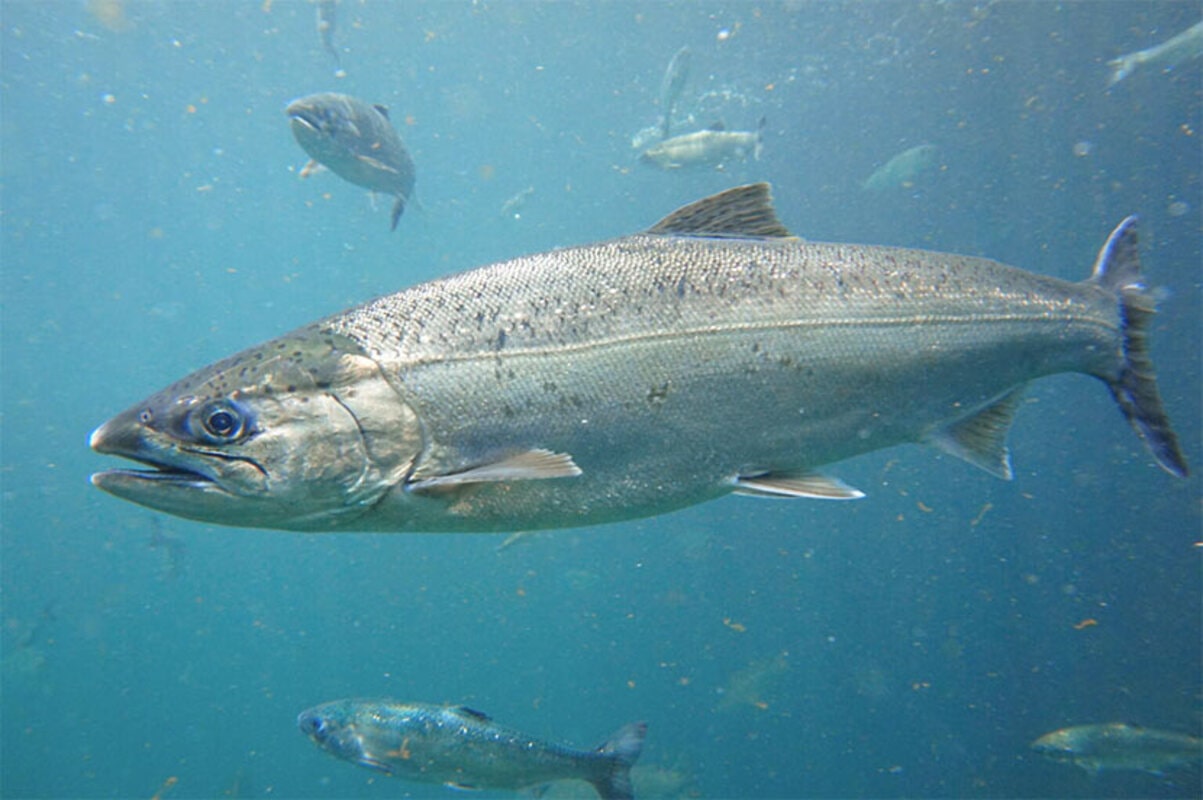Salmon is not only a popular fish in world cuisine but also a true natural phenomenon. Its lifestyle, navigational abilities, and impact on ecological processes amaze even experienced biologists. This species has a complex life cycle, remarkable endurance, and plays a crucial role in both terrestrial and marine ecosystems. There are several species of salmon, each with its own unique traits. Here is a collection of fascinating facts about salmon you may not have known.
- Salmon is born in freshwater, matures in the ocean, and then returns to the same river where it was born to spawn. It can travel thousands of kilometers, navigating by the Earth’s magnetic field and the specific chemical signature of its home waters. Such precise navigation continues to intrigue scientists worldwide. This behavior is known as homing instinct.
- During spawning, salmon undergo dramatic physical changes. Their coloration intensifies, and males develop a hooked jaw and a pronounced hump. These changes have evolutionary significance, helping them compete for mates. The transformation occurs within just a few days.
- After spawning, most salmon die, ending their life cycle at the place of birth. This is particularly true for Pacific species such as chum or pink salmon. Atlantic salmon may survive and spawn more than once. However, each additional spawning cycle greatly reduces their chance of survival.
- Salmon can leap over waterfalls higher than two meters. Their powerful muscles and tail generate enough force to overcome natural obstacles. This ability is essential during their upstream migration. Throughout this journey, they demonstrate incredible stamina and strength.
- After death, salmon carcasses become a vital source of nutrients for entire ecosystems. They are consumed not only by predators but also by microorganisms and even absorbed by plants through the soil. Scientists have shown that trees growing near spawning areas grow faster thanks to the protein and nitrogen from salmon. Thus, a marine fish nourishes even forest life.
- Young salmon may remain in freshwater for several months or years after hatching. During this time, they learn to find food, avoid predators, and adapt to life in saltwater. The transition to the ocean is accompanied by significant physiological changes. This process is called smoltification.
- The average lifespan of salmon depends on the species and ranges from two to seven years. For example, pink salmon live two years, while Chinook salmon can live up to seven. Some individuals have been recorded to live up to eight years. The life cycle of salmon is closely aligned with seasonal and environmental conditions.
- Salmon can sense the Earth’s magnetic field, which helps them navigate during ocean migrations. This biological compass functions through specialized cells. It works in combination with their sense of smell and vision. Thanks to this, salmon can determine their direction even in open ocean.
- Salmon farming has become a major part of the global economy. Most salmon found in stores is farm-raised. While this satisfies market demand, it also raises concerns about mixing with wild populations. Scientists are developing methods to reduce the environmental impact of aquaculture.
- Salmon is a rich source of omega-3 fatty acids. Regular consumption benefits the heart, circulatory system, and brain function. It also contains high-quality protein and vitamin D. Because of these properties, salmon is often considered a healthy alternative to red meat.
- In the culture of indigenous peoples of the Pacific Northwest, salmon holds a central place in spiritual beliefs and rituals. It symbolizes the life cycle, generosity, and the connection between sea and land. The return of salmon to rivers is celebrated as a sacred event. These traditions have been preserved for generations.
- Different species of salmon vary in color, behavior, and size. For example, sockeye salmon turns bright red during spawning. Chum salmon has a paler color but can grow significantly larger. This diversity makes the Oncorhynchus genus particularly fascinating to ichthyologists.
- In regions with hydroelectric dams, salmon often cannot return to their natural spawning grounds. To address this, special fish ladders and channels are constructed. Some of these structures are complex engineering projects stretching dozens of meters. They help maintain the natural migration routes of the species.
- Climate change affects the duration and success of salmon migration. Warmer water temperatures can disrupt spawning schedules and lead to high mortality among juveniles. It also increases susceptibility to parasites and diseases. Scientists monitor these trends to improve conservation strategies.
- Salmon have highly sensitive vision and can detect ultraviolet light. This ability helps them hunt for plankton and insects during their early life stages. As they age, their spectral sensitivity adapts to the lighting conditions of the ocean. This visual flexibility supports survival in a variety of environments.
These interesting facts about salmon reveal how complex and remarkable this species truly is. Its ability to travel vast distances, change its body shape, nourish ecosystems, and even affect tree growth is astonishing. You may not have realized that a single fish could play such an important role in so many natural processes. Through salmon, we gain a deeper understanding of how interconnected life is on our planet.





